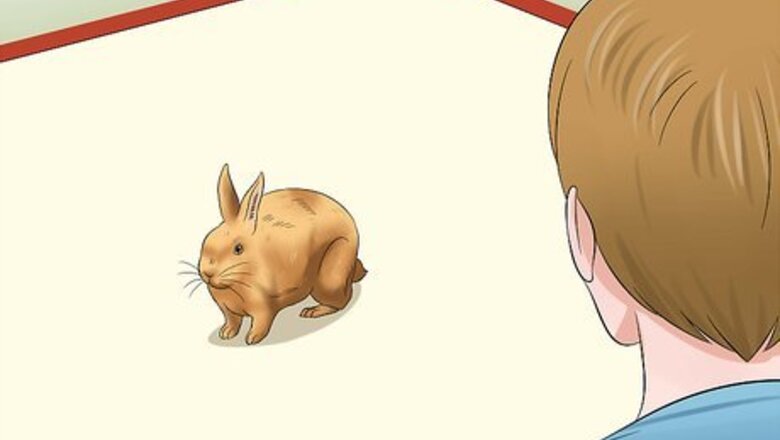
views
X
Research source
These rabbits come in pale gold and cream colors and they have a short, stocky build. If you have a Sussex rabbit, then you will need to make sure that you see to your rabbit’s housing, feeding, health, and companionship needs.
Housing Your Sussex Rabbit
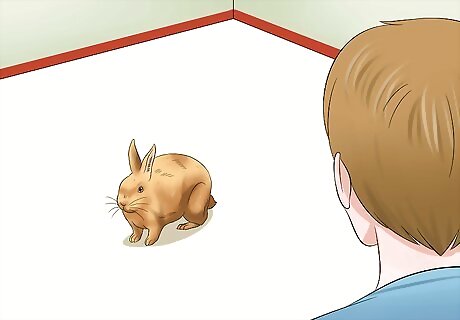
Plan to keep your Sussex rabbit indoors. Keeping your Sussex rabbit outside will put her at risk of premature death and loneliness. Sussex rabbits require human companionship to thrive. They are also prone to overheating, hypothermia, and attacks by predators. Even if you are certain that your Sussex rabbit is safe in her cage, rabbits are known to have heart attacks from fear. Keeping your Sussex rabbit outside may also cause her to become antisocial.
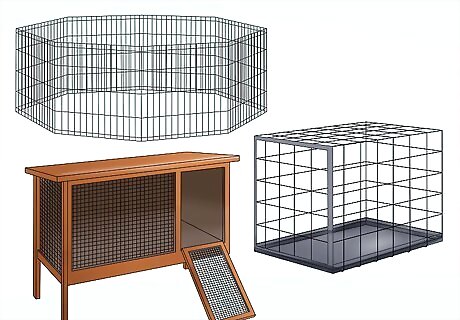
Choose a cage. There are wide variety of indoor cages and hutches for rabbits. You can house your rabbit in a room that is rabbit-proofed, keep your rabbit in a puppy playpen, or purchase a rabbit condo. Whatever you choose, make sure that your Sussex rabbit has plenty of space to move around. The minimum length of an indoor hutch and run should be four feet, but five feet is better. The width should be about two feet and the enclosure should be high enough so that your Sussex rabbit can stand up on her hind legs without her ears touching the top. Do not get a wire bottom cage because it can hurt your Sussex rabbit’s feet. Look for a cage that has a solid metal bottom or cover the bottom of your rabbit’s cage with plywood.
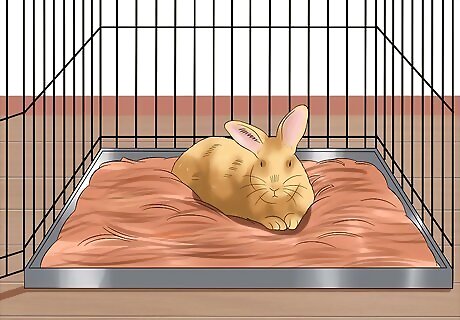
Add proper bedding to the cage. Make sure the floor of your Sussex rabbit’s cage is covered with at least two to three inches of bedding. There are numerous substances that you can use for bedding, such as straw (warm and soft), paper pulp (recycled material, safe and high absorbent), and shredded cardboard. Do not use sawdust because it can irritate your rabbit. Never use cedar or pine shavings in your Sussex rabbit’s as bedding or in your rabbit’s litter box. These materials can cause your Sussex rabbit to develop respiratory and liver problems.
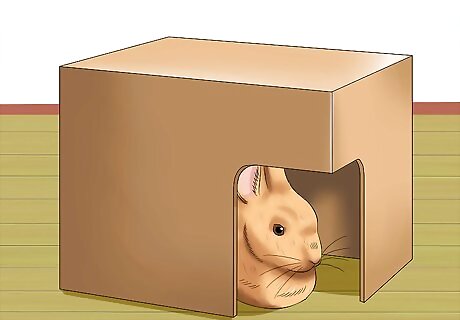
Provide a hiding place for your Sussex rabbit. Rabbits feel more secure if they have a place to retreat to when they feel frightened or stressed. You can provide your rabbit with a hiding place by putting a cardboard box or wooden box with a hole cut out of it into your rabbit’s cage. If you have more than one rabbit, then you will need to provide a separate hiding place for each rabbit.
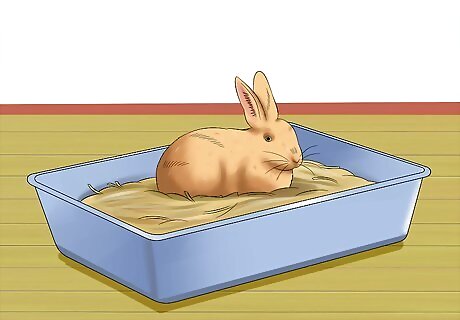
Include a litter box. To prevent your Sussex rabbit from urinating and defecating all over her cage, place a small litter box in a corner of your rabbit’s cage. Then, put a few sheets of newspaper into the litter box and layer hay on top of the newspaper. Clean the litter box daily to keep your rabbit’s cage from smelling. You can always move your rabbit’s litter box to a different corner if she does not seem to be using it where it is. Move it to the corner that she uses to urinate and defecate. Try placing a couple of litter boxes in your house so your Sussex rabbit can use them when she is out of the cage. Be aware that rabbits pass two different types of pellets. One type is small and dry and the other type is larger and sticky, called a cecotrophy. The cecotrophy contains food that has been partially digested but that still contains nutrition. Your Sussex rabbit will re-eat these. Never remove cecotropes from your rabbit’s litter box or cage.
Feeding Your Rabbit
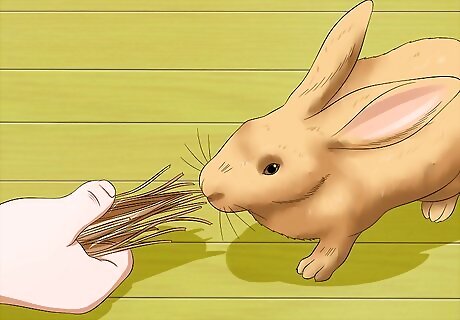
Make sure that your Sussex rabbit has plenty of hay. Hay the best type of food for Sussex rabbits. Hay provides nutrition for your rabbit and it also wears down your rabbit’s teeth, which is important because they never stop growing. Provide your Sussex rabbit with an unlimited amount of fresh hay. Check your Sussex rabbit’s hay supply often to make sure she has enough. Timothy hay is an excellent type of hay to give your Sussex rabbit.
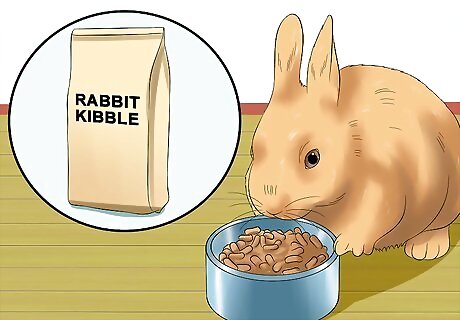
Offer your Sussex rabbit some rabbit kibble. Plain rabbit kibble also provides your Sussex rabbit with nutrition, but you only need to give your rabbit a small amount of kibble each day. Try to limit your rabbit’s kibble intake to about ¼ cup per day. If your rabbit is overweight, then he may need less kibble. Larger rabbits or rabbits that are not gaining weight may require more. Check with your veterinarian for a specific recommendation.
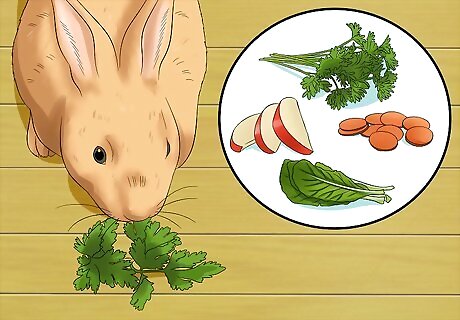
Give your Sussex rabbit some veggies and fruits. Dark leafy greens, carrots, and some fruits are also good healthy choices for your Sussex rabbit. Try to give your Sussex rabbit a few leaves of dark leafy greens each day as well as something crunchy, like carrot slices or apple slices. Some healthy veggie and fruit treats for your rabbit include: basil cilantro parsley collard greens kale carrot slices apple slices banana slices
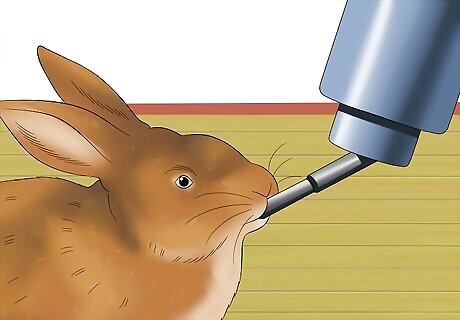
Keep your Sussex rabbit hydrated. Your Sussex rabbit needs constant access to fresh, clean water. A sipper bottle works well because it won’t tip over and spill like a dish of water can. Sipper bottles are also less likely to get contaminated with hay or feces. Keep your Sussex rabbit’s water bottle full of fresh, clean water at all times. If you choose to use a water dish instead, use a ceramic bowl and check the water often.
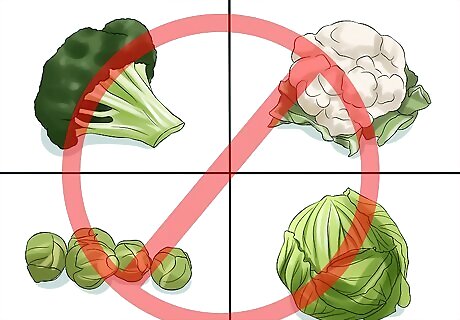
Feed your Sussex rabbit certain foods only in moderation. Eating some foods in large amounts may give your Sussex rabbit gas, bloat, or diarrhea if eaten in excess. He should eat these foods only in moderation: cabbage cauliflower broccoli brussel sprouts spinach
Protecting Your Sussex Rabbit’s Health
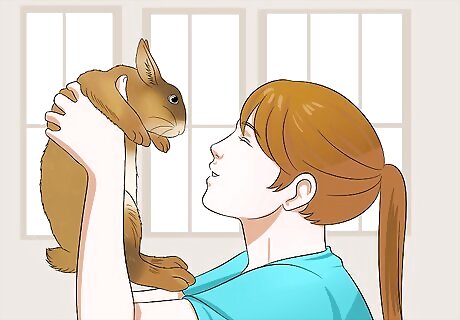
Play with your Sussex rabbit. To be healthy, Sussex rabbits require regular exercise. Make sure that your Sussex rabbit gets two hours (or more) of exercise every day. You will need to let your Sussex rabbit out of her cage to get exercise. When you do so, make sure that you: Keep your rabbit indoors. Your rabbit will be in danger from predators if you let her play outside. Confine her to one or two rooms. Try keeping her in your bedroom or putting up a couple of baby gates to make sure she stays within an area of your house. Hide or cover electrical cords. You can hide electrical cords with some hard plastic tubing or spiral wrap. Or, just keep all cords off of the ground while your rabbit is out of her cage. Prevent your rabbit from chewing things she shouldn’t. A Sussex rabbit will chew on wall trim, door edges, chairs, and table legs, a rug, loose carpeting, or loose wallpaper. If you catch your Sussex rabbit chewing on something that is off limits, don’t get mad or punish your rabbit. Just gently pick up your rabbit, move her away from the object and provide her with something to distract her from the other object, such as a cardboard box or a piece of a raw carrot.
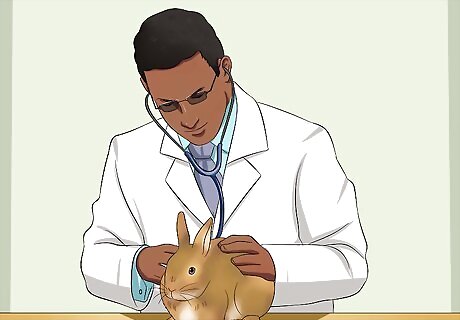
Take your Sussex rabbit to see a veterinarian. To keep your Sussex rabbit healthy, you will need to take him for annual checkups and monitor your rabbit’s health closely. If your Sussex rabbit seems ill at any time, then take her to see a veterinarian. Signs that your rabbit may be ill include: not using back legs or not hopping losing lots of fur not going to the bathroom having loose stools producing dark red urine or no urine seeming extra tired and not moving or reacting normally having runny eyes and/or nose drooling (wet chin) having a fever of 105 degrees Fahrenheit or higher
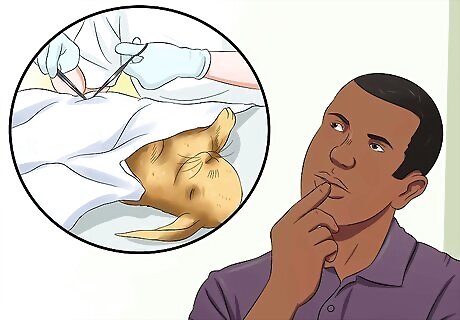
Get your Sussex rabbit spayed or neutered. If you don’t plan to breed your Sussex rabbit, then you should get him or her spayed or neutered. Spaying and neutering your rabbits prevents unwanted litters and may also help to protect your rabbit’s health. Rabbits that are not spayed or neutered are more prone to hormonal behaviors, such as fighting or urine spraying. Not spaying female rabbits puts them at a higher risk of uterine cancer as well.
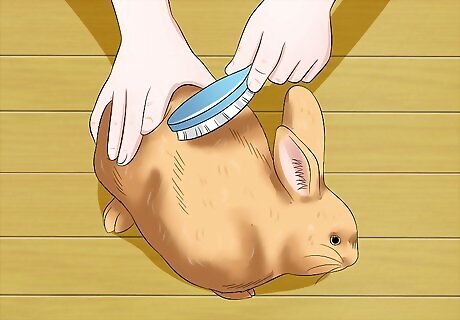
Groom your Sussex rabbit as needed. Your Sussex rabbit will need to be brushed once per week to keep his fur soft and reduce shedding. Use a natural bristle brush or a fine-toothed comb to go over your Sussex rabbit’s fur once per week. Never bathe your Sussex rabbit. Rabbits may easily become hypothermic when they get wet. Sussex rabbits do not like to get wet either.
Considering a Sussex Rabbit
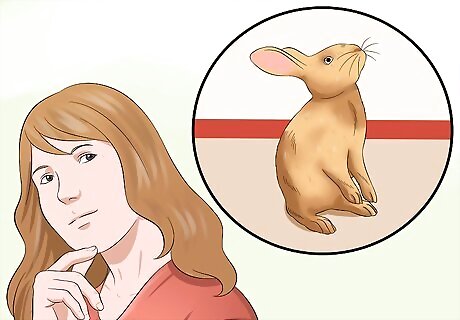
Think about the Sussex rabbit’s personality. The Sussex rabbit has been dubbed by some people as the Labrador of the rabbit world. This is because of their eagerness to please, their inquisitiveness, playfulness, friendliness, and love of food! If this is the type of rabbit companion that you are looking for, then a Sussex rabbit may be for you.
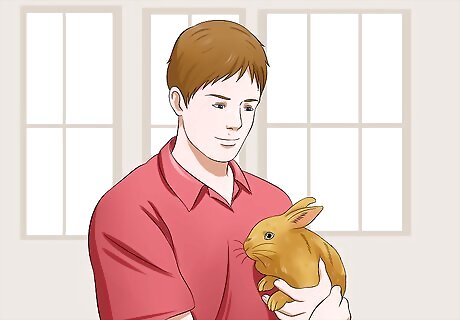
Decide if you have the time to devote to a pet rabbit. If you are looking for an indoor pet and companion, then a Sussex rabbit may be a good choice. Sussex rabbits enjoy human company and interaction. Do not get a Sussex rabbit if you cannot devote time and attention to your pet. Sussex rabbits will get lonely and bored if not given enough attention.
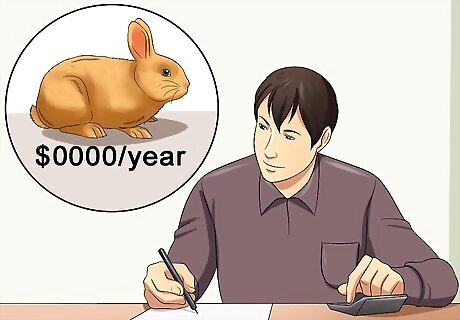
Consider your ability to provide for the rabbit. Rabbits can be expensive because you have to pay for their housing, food, and veterinary care. Take some time to consider whether or not you have the extra money to provide your Sussex rabbit with everything it needs. Keep in mind that veterinary care for rabbits costs about the same as veterinary care for a cat or dog. You can prepare for your rabbit’s veterinary expenses by taking out pet insurance.
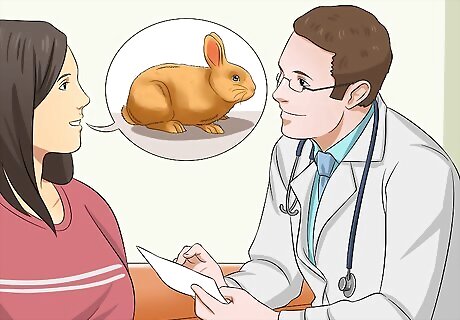
Find a rabbit-friendly veterinarian. Before you decide to bring home a Sussex rabbit, make sure that you can find a rabbit-friendly veterinarian. You do not need to find a veterinarian that specializes in rabbits, just someone who has cared for rabbits and has an interest in them. Not all veterinarians are knowledgeable about rabbits or feel comfortable treating them. Try to find an “exotics” veterinarian or a veterinarian who has had some expertise or experience caring for rabbits.

















Comments
0 comment